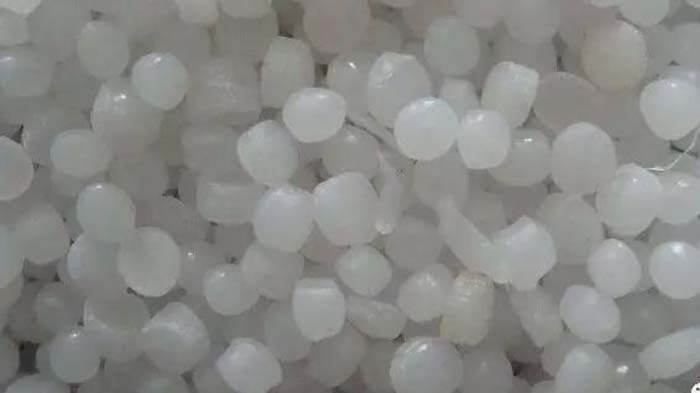Polyethylene PE material is a typical thermoplastic, which is an odorless, tasteless, non-toxic, and flammable white powder. Polyethylene PE material for the molding process is extruded and granulated waxy granule material with a milky white appearance. Its molecular weight is in the range of 10,000 to 100,000.

The molecular weight over 100,000 is ultra-high molecular weight polyethylene PE material. The higher the molecular weight, the better the physical and mechanical properties, and the closer to the level of engineering materials required.
The higher the molecular weight, the more difficult it is to process. The melting point of polyethylene PE material is 100-130C, and its low-temperature resistance is excellent. It can still maintain good mechanical properties at -60℃, but the use temperature is 80~110℃.
Polyethylene PE material under the action of the atmosphere, sunlight, and oxygen will be aging, discoloration, cracking, brittle or chalking, and lose its mechanical properties.
At the plastic injection molding and processing temperature, the melt will also decrease in its kill degree due to oxidation, and discoloration and streaking will occur, so care should be taken during the molding and processing and use process or when selecting materials.
Because polyethylene PE material has the above qualities and is easy to process and mold, polyethylene PE material recycling is of great value.
Main plastic injection molding conditions of polyethylene PE material
Barrel temperature
The barrel temperature is mainly related to the density and melt flow rate of polyethylene PE material, but also to the type and performance of the injection molding machine and the shape of the first-level plastic part.
Since polyethylene PE material is a crystalline polymer, the grains have to absorb certain heat when melting, so the barrel temperature should be 10 degrees higher than its melting point.
For LDPE, the barrel temperature is controlled at 140-200℃, and the barrel temperature of HDPE is controlled at 220℃, with the rear of the barrel taking the minimum value and the front taking the maximum value.
Mold temperature
Mold temperature has a greater impact on the crystallization condition of the plastic parts, high mold temperature, high crystallization of the melt, high strength, but shrinkage will also increase. Usually, LDPE mold temperature control at 30 ℃ ~ 45 ℃, while the HDPE temperature is correspondingly higher at 10 ~ 20 ℃.
Injection molding pressure
Increasing the injection pressure is conducive to the melt filling the mold, due to the good fluidity of PE, so in addition to thin-walled slender products, should be fine to choose a lower injection pressure, the general injection pressure of 50 ~ 100MPa. simple shape. After the wall of larger plastic parts, injection pressure can be lower, and vice versa is high.
Drying
If stored properly then no drying is required.
Melting temperature.
220~260C. For materials with larger molecules, a melting temperature range of 200~250C is recommended.
Mold temperature: 50~95C.
50-95C. Higher mold temperatures should be used for wall thicknesses below 6mm and lower mold temperatures for wall thicknesses above 6mm.
The cooling temperature of the part should be uniform to minimize the difference in shrinkage rate. For optimal cycle time, the cooling cavity diameter should be not less than 8mm and the distance from the mold surface should be within 1.3d (where “d” is the diameter of the cooling cavity).
Besides the What is the Polyethylene PE material plastic injection molding process article, you may also be interested in the below articles.
Summary Of 50 Injection Mold Structure Operation Dynamic Diagrams
Auto Parts Stamping Die Design Concept
